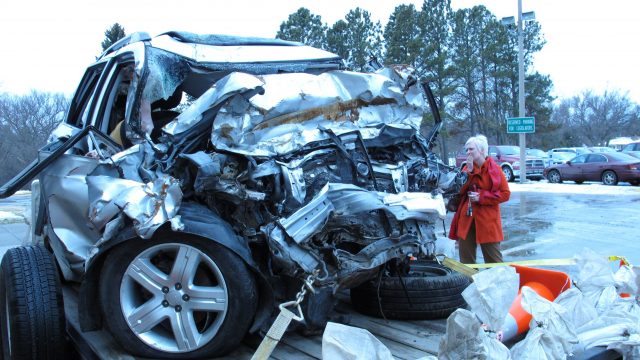North Dakota's Tougher DUI Laws Are Creating Jail Space Problems

During the 2013 session, the North Dakota Legislature made some sweeping changes to the state’s DUI laws. Here’s a summary:
- The minimum fine for first-time offenders goes from $250 to $500.
- First-timers with a BAC twice the legal limit – 0.16 percent or greater – will now be guilty of a new aggravated DUI category with a minimum fine of $750 and a mandatory two days in jail or 20 hours of community service.
- Repeat offenders get mandatory probation and participation in the 24/7 sobriety program which requires daily alcohol screenings.
- Repeat offenders also face minimum sentences ranging from 10 days in jail for a second offense within seven years to one year and one day for a fourth offense and beyond.
- A fourth offense, and all subsequent offenses, are now Class C felonies punishable by up to five years in prison and a $5,000 fine.
- Drunken drivers who kill another person now face a Class A felony offense punishable by up to 20 years in prison.
- Refusing to submit to a blood/breath test is now as serious a crime as a DUI.
As you can see, some of the biggest changes result in more people spending more time in jail. That’s putting a strain on the availability of jail space in the state.
I wrote about the impact on jails in western North Dakota, which were already overcrowded thanks to rapid population growth there, but now the problem is hitting eastern North Dakota as well:
The Grand Forks County Correctional Center is seeing a drop in income and officials are watching the issue closely.Federal agencies contract with the center and pay to house their inmates in the facility, but due to stricter DUI laws and a variety of other reasons, the center is filling up with more county inmates than ever before.
CCC Administrator Bret Burkholder said he is monitoring the situation closely.
“We’re not in a panic situation, we’re planning a wait, watch and see type of thing,” he said. “It’s just being aware of what’s going on, and if this is just a blip and goes back down then we have nothing to be concerned about, but if this is the tip of an iceberg, it’s better to know.”
Burkholder said it’s hard to know exactly why, but the 24/7 Sobriety Program and more stringent DUI consequences have partially contributed to the increase in county inmates.
The reaction many have to the news that new DUI laws are filling up the state’s jails is probably so what. A DUI drivers – particularly the repeat and egregious offenders who are getting the jail time – are a threat to public safety. If we have to spend more to jail them, so be it.
But will this additional jail time really solve the problem? The advocates of the “get tough” approach to drunk driving don’t like to admit it, but tougher enforcement hasn’t worked well in the past. In pushing for DUI reforms, Governor Jack Dalrymple pointed out earlier this year that DUI arrests have increased by 53% since 2001. Yet, despite that increase in arrests, alcohol-related fatalities and injuries on North Dakota roads have gone up too (though in the context of a 29% increase in vehicle miles traveled on our roads).
I don’t think these tougher laws are going to save any lives. I don’t think tougher penalties are going to make drunks think twice before getting in a car any more than being a mother to drunk driving victims made Sandy Hernandez (a media star for the proponents of DUI reform during the legislative session) refrain from getting behind the wheel after drinking. Two years from now, I think we’re going to see about the same number of alcohol-related deaths and injuries on our roads as we’ve seen for the last decade.
Probably more.
What we are definitely going to see is more enforcement costs. Mandatory sentences will require more jail space in a state where our jails are already bursting at the seams. More time required from law enforcement officials to monitor the sobriety of DUI offenders, and the fulfillment of their probation/community service.
In short, we’re going to spend a lot more tax dollars to accomplish very little in terms of traffic safety.





